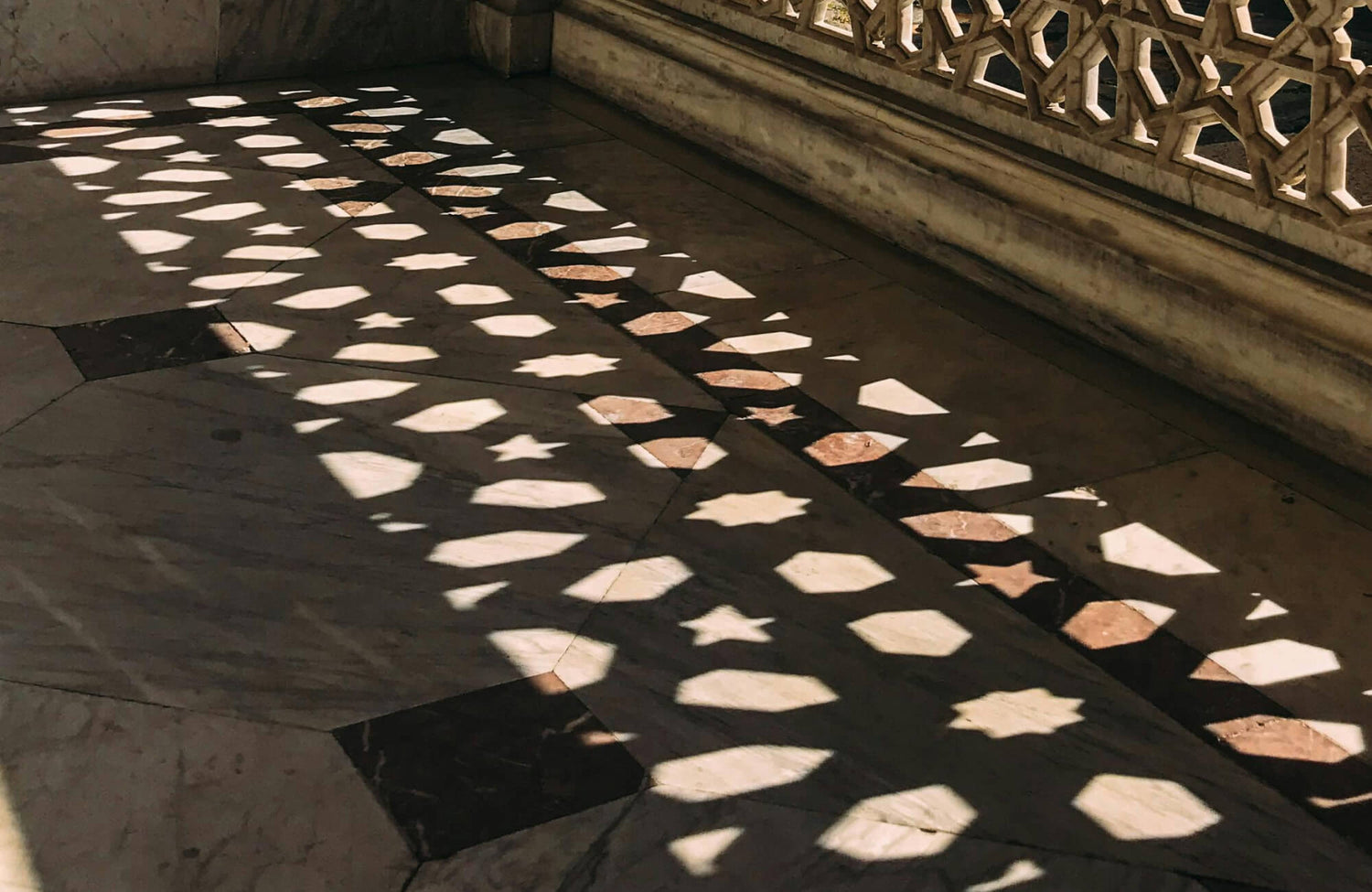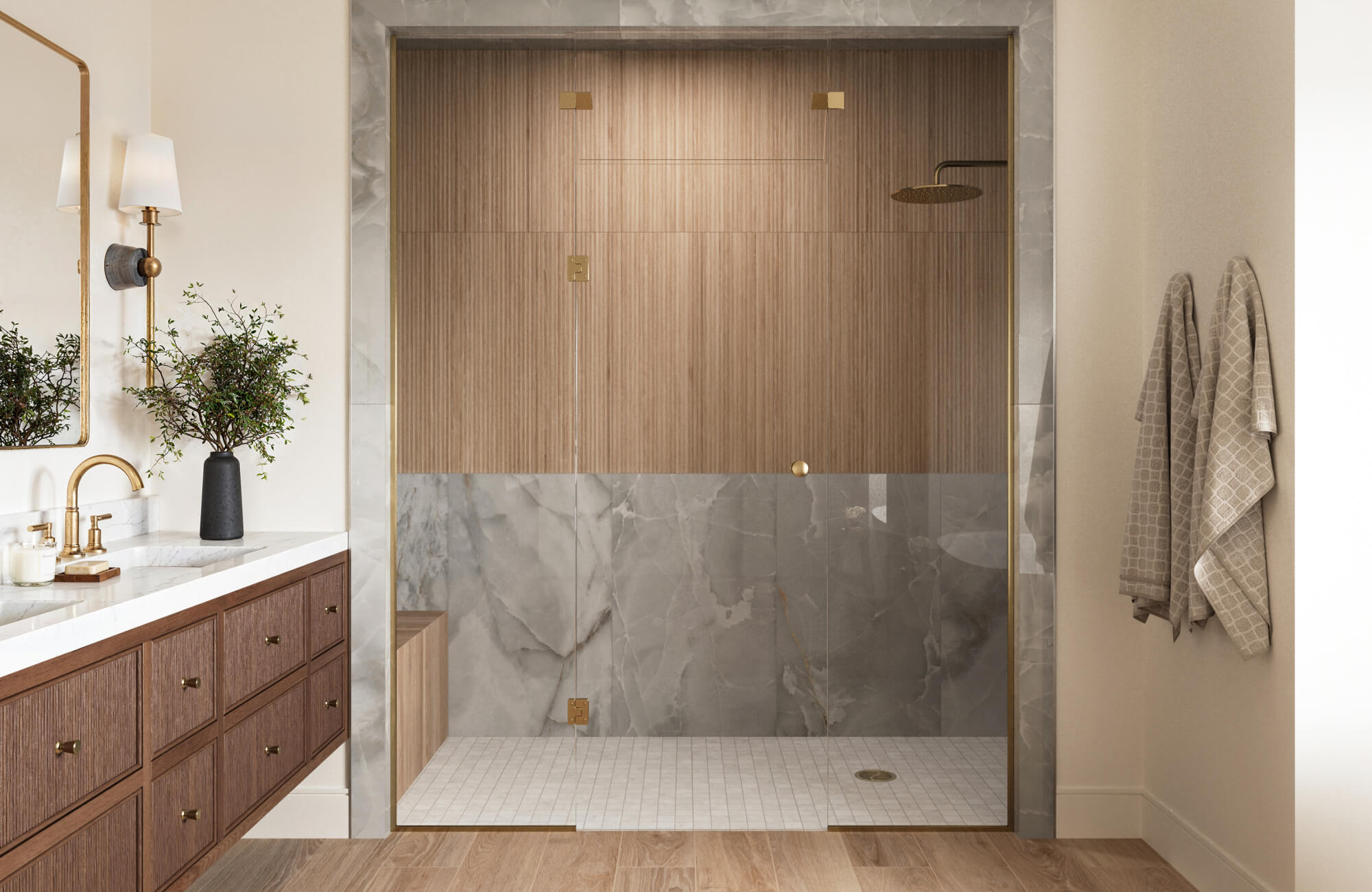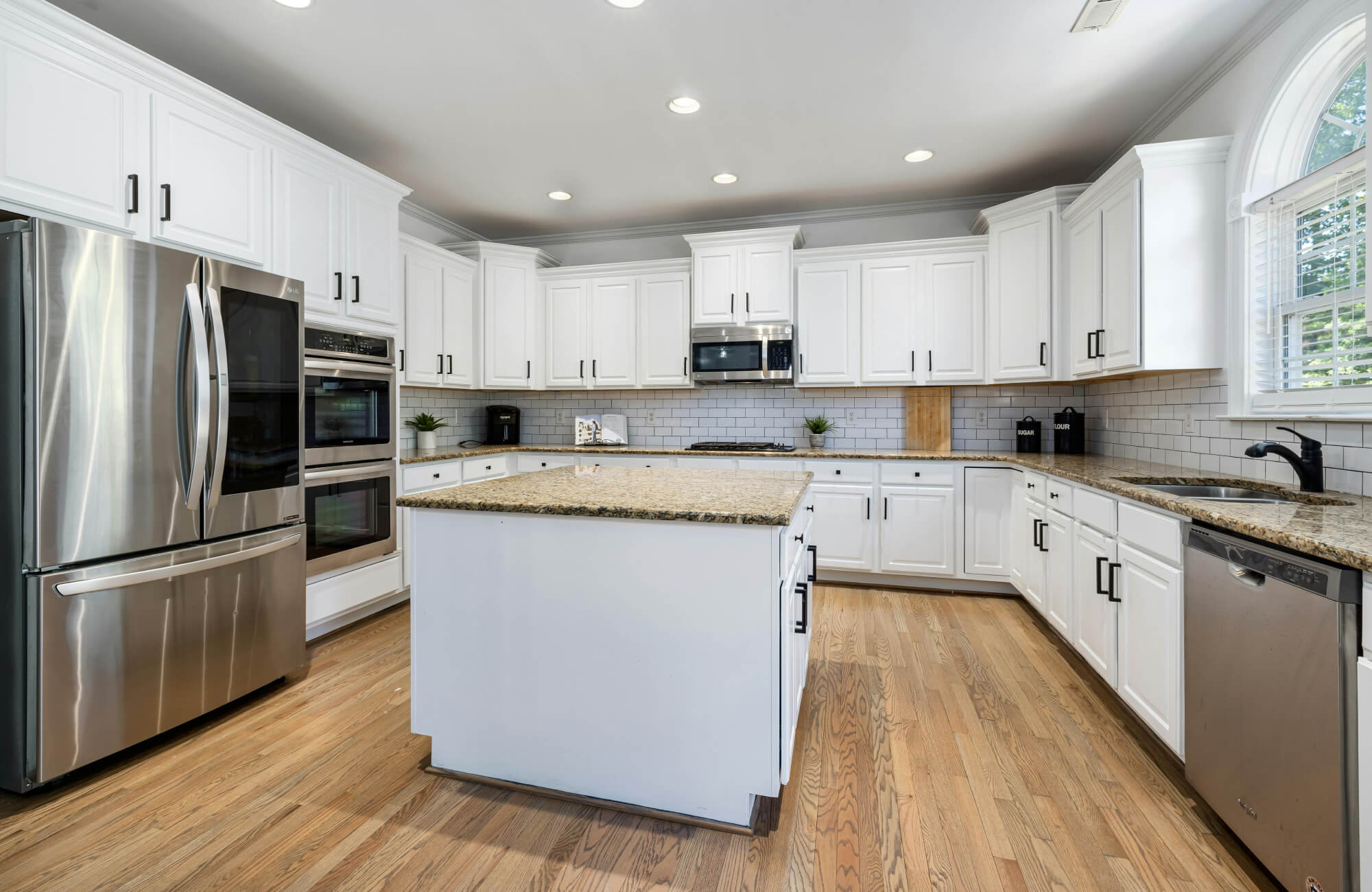Marble, a timeless material prized for its elegance and durability, has been used in architecture and sculpture for centuries. Its unique veining patterns and smooth texture have made it a favorite among designers and homeowners alike. However, a common misconception persists: that marble is susceptible to cracking when exposed to sunlight. This article explores the science behind marble, debunks this myth, and explores the factors that truly affect its longevity.

The Science Behind Marble
To understand the relationship between marble and sunlight, we must first look into the science behind this exquisite natural stone.
Marble Composition
Marble is a metamorphic rock primarily composed of calcium carbonate (CaCO3), which originates from limestone subjected to intense heat and pressure over time. This process re-crystallizes the limestone, resulting in the characteristic interlocking calcite crystals that give marble its distinct veining and translucent appearance. Trace minerals such as iron, magnesium, and silicates contribute to the variety of colors and patterns found in marble, ranging from classic white and gray to striking shades of green, pink, or black.
Marble's Reaction to Heat and Light
While marble is relatively heat-resistant, prolonged exposure to intense heat can cause thermal expansion and contraction. This can lead to stress fractures, especially if the marble is not properly supported or installed. However, the impact of heat on marble is often exaggerated.
Sunlight, on the other hand, can cause a phenomenon known as solarization, which can lead to discoloration and fading over time. However, modern treatments and sealants can significantly mitigate this effect.
The Role of Composition in Marble's Durability
The quality and purity of marble play a crucial role in its durability. High-quality marble, with minimal impurities and a uniform crystalline structure, is more resistant to weathering and discoloration. Conversely, marble with numerous impurities or variations in mineral composition may be more susceptible to damage.
Additionally, the specific type of marble can influence its durability. For instance, Carrara marble, renowned for its white color and delicate veining, may be more sensitive to weathering than other types of marble.

Debunking the Myth About Marble and Sunlight
While the misconception that marble cracks in sunlight persists, scientific evidence and historical examples refute this claim.
The Origin of the Myth
The origin of this myth can be traced back to several factors. Early marble use and maintenance practices often involved less sophisticated techniques than those available today. Improper installation, inadequate sealing, and exposure to harsh weather conditions could lead to damage and cracking. Moreover, the quality and purity of marble varied significantly across different regions, with some types being more susceptible to weathering than others. These factors may have contributed to the belief that sunlight was a primary cause of marble deterioration.
Scientific Evidence
Numerous scientific studies have investigated the effects of sunlight on marble. Researchers have exposed marble samples to intense UV radiation and monitored their physical and chemical properties. These studies have consistently shown that while prolonged exposure to sunlight can cause some degree of discoloration and surface weathering, it rarely leads to significant cracking or structural damage.
Laboratory tests have also examined the impact of temperature fluctuations on marble. While thermal stress can cause cracking, this is typically more of a concern in regions with extreme temperature swings. In moderate climates, marble can withstand fluctuations in temperature without significant damage.
Case Studies: Durable Marble Structures
Many iconic marble structures around the world have stood the test of time, despite being exposed to sunlight for centuries. The Parthenon in Athens, Greece, and the Taj Mahal in India are prime examples of marble structures that have endured for millennia. These buildings demonstrate that marble, when properly cared for and installed, can withstand the elements and maintain its beauty for generations.

Other Factors Affecting Marble's Durability
While marble is a remarkably durable material, its longevity can be influenced by various factors, including installation, weathering, and maintenance.
The Role of Installation
Proper installation is crucial to ensure the long-term durability of marble. The marble slabs must be securely fastened to the substrate using appropriate adhesives and sealants. If not installed correctly, the marble can be susceptible to cracking and chipping, especially in areas with high-impact zones or heavy loads.
Additionally, it's important to consider the expansion and contraction of marble due to temperature fluctuations. Proper installation techniques, such as leaving expansion joints, can help to accommodate these movements and prevent damage.
The Impact of Weathering
Weathering, the process of rock breakdown caused by natural agents, can significantly affect the appearance and durability of marble. Wind, rain, and temperature fluctuations can all contribute to the weathering of marble. Wind-borne particles, such as sand and dust, can scratch and abrade the surface of the marble, leading to a loss of polish and a dull appearance.
Maintenance and Care
As previously highlighted, regular cleaning and sealing are essential to protect marble surfaces and prevent damage. Cleaning marble with mild, non-abrasive cleaners can help remove dirt and grime without damaging the stone. Sealing can also help in protecting them from water, stains, and other contaminants. A high-quality sealant can penetrate the pores of the marble, creating a protective barrier that repels water and prevents dirt from penetrating the stone. Regular resealing, typically every one to two years, is recommended to maintain the effectiveness of the sealant.
If damage occurs, it's important to address it promptly to prevent further deterioration. Minor scratches and chips can often be repaired by a professional stone restoration technician. However, more severe damage, such as deep cracks or structural damage, may require more extensive repairs or replacement.

Environmental Factors Influencing Marble Outdoors
The durability of marble when exposed to outdoor conditions is influenced by a variety of environmental factors.
Temperature Extremes and Seasonal Changes
We’ve established that marble, like many materials, is susceptible to thermal expansion and contraction. Extreme heat or rapid temperature fluctuations between day and night can create stress within the material, potentially leading to micro-cracking. As temperatures rise, the marble expands, and as they fall, it contracts. This constant expansion and contraction can weaken the stone over time.
Role of Moisture and Humidity
Moisture, in the form of rain or dew, can also impact marble's durability. When moisture seeps into the pores of the marble, it can expand and contract as it freezes and thaws. This freeze-thaw cycle can exacerbate existing cracks and lead to further deterioration. Additionally, moisture can create a conducive environment for the growth of algae and fungi, which can stain and damage the marble's surface.
Airborne Pollutants
Airborne pollutants, such as sulfur dioxide and nitrogen oxides, can react with moisture in the air to form acidic solutions. When these acidic solutions come into contact with marble, they can chemically react with the calcium carbonate in the stone, causing it to dissolve and weaken. This process, known as acid rain, can significantly accelerate the damage on marble surfaces.

How to Protect Marble from Sunlight
To ensure the longevity and beauty of your marble surfaces, especially those exposed to sunlight, consider these protective measures:
Proper Sealants and Coatings
Specialized UV-resistant sealants are designed to shield marble surfaces from ultraviolet rays, minimizing discoloration, fading, and surface degradation. These sealants create a barrier that reduces the marble’s exposure to harmful elements, including heat and moisture, which can amplify the effects of sunlight.
For outdoor marble installations, consider using penetrating sealants that absorb into the stone and provide long-lasting protection against environmental wear. Additionally, surface coatings like acrylic or polyurethane finishes can enhance the durability of marble exposed to direct sunlight, though they may need reapplication every few years depending on the level of exposure. Selecting a high-quality, UV-stable product and following the manufacturer’s application guidelines ensures optimal protection for your marble.
Strategic Placement and Shading
Strategic placement of marble surfaces can significantly reduce their exposure to direct sunlight. If possible, position marble elements in shaded areas or behind curtains or blinds. For outdoor marble installations, such as statues or fountains, consider using protective covers or awnings to shield them from the sun's rays.
Routine Cleaning and Maintenance
Aside from the tips mentioned earlier, you can also focus on removing fine dust and particles that may reflect or intensify the effects of UV radiation when left on the surface. Wipe down the marble regularly with a microfiber cloth to avoid scratches and keep the surface cool.
For outdoor marble, consider rinsing it periodically with clean water to remove dust and environmental pollutants, as these can exacerbate sunlight-induced wear. Additionally, schedule professional polishing once or twice a year to refresh the marble's surface and ensure its natural reflectivity helps disperse heat, minimizing sun damage.

Alternatives for Sunlit Areas
While marble is a stunning material, it's essential to consider its limitations when exposed to direct sunlight. If you're looking for a durable and low-maintenance option for sunlit areas, consider these alternatives:
Granite
Granite is a highly durable natural stone that is resistant to heat, cold, and UV radiation. Its dense composition allows it to maintain its structural integrity even under extreme environmental conditions, making it an excellent choice for outdoor applications. From countertops and flooring to outdoor kitchen surfaces and fireplace surrounds, granite’s ability to withstand prolonged sunlight exposure ensures longevity and reliability.
Additionally, granite is available in a wide variety of colors and patterns, allowing homeowners to find options that suit their design preferences. Its natural texture and polished finish also enhance the aesthetic appeal of both modern and traditional outdoor spaces, making it a versatile and stylish material.
However, while granite is exceptionally durable, it does require periodic sealing to maintain its resistance to stains and moisture. Moreover, due to its weight and cost, installation can be more challenging and expensive compared to other materials, which may not suit all budgets or projects.
Quartzite
Quartzite, a metamorphic rock derived from sandstone, is celebrated for its exceptional strength and durability. Even harder than granite, quartzite is highly resistant to scratching, staining, and heat, perfect for areas exposed to sunlight and heavy use. Its density also ensures that it can endure fluctuating temperatures without cracking or fading, making it a reliable choice for patios, outdoor countertops, and poolside surfaces.
Beyond its durability, quartzite offers a stunning visual appeal with its natural veining and crystalline texture, which often resemble marble. This makes it a popular choice for homeowners seeking a balance of beauty and resilience in high-sunlight areas.
However, quartzite’s hardness can also make it more challenging to work with during installation, potentially increasing labor costs. Additionally, while quartzite is generally low-maintenance, regular sealing is still necessary to protect it from moisture and maintain its pristine appearance, especially in outdoor environments.
Engineered Stone
Engineered stone is a man-made material that combines natural quartz with resins and pigment to create a highly durable and visually appealing surface. Its non-porous structure makes it resistant to stains, scratches, and heat, making it particularly suitable for outdoor applications like countertops, tabletops, and backsplashes.
Unlike natural stone, engineered stone also offers consistent patterns and colors, allowing homeowners to achieve a uniform look across various surfaces. Its UV-resistant properties ensure that it does not discolor or degrade over time, even in areas with direct sunlight exposure. Additionally, its low-maintenance requirements make it a practical choice for busy households or outdoor spaces that demand long-lasting performance.
However, while engineered stone is UV-resistant, it is not entirely impervious to prolonged and extreme sunlight exposure. Over time, excessive heat can potentially cause slight warping or fading in some products. Moreover, its synthetic composition may lack the unique, natural character of authentic stone, which could be a drawback for those seeking a more organic aesthetic.
Marble Look Porcelain Tiles
Marble look porcelain tiles are the ideal choice among alternatives to natural marble, offering unmatched durability, style, and ease of maintenance. Unlike natural stone options like granite or quartzite, which require periodic sealing and higher installation costs, these tiles are non-porous and naturally resistant to water, stains, scratches, and fading. This makes them perfect for indoor and outdoor spaces, even in sunlit areas where natural marble might discolor or wear. Edward Martin’s Chantel 24x48 Matte Porcelain Tile in Imperial exemplifies this balance of elegance and practicality, suitable for patios, pool surrounds, and bright interiors.
In addition to their durability, marble look porcelain tiles also provide remarkable design flexibility. With a wide range of colors and finishes that mimic the luxurious look of Calacatta and Nero Marquina, among others, these tiles achieve the refined appearance of natural marble without the high maintenance, outperforming engineered stone by offering more realistic textures and patterns.
Finally, these tiles are cost-effective and low-maintenance, requiring only basic cleaning to retain their beauty. A simple wipe with a damp cloth or mop is often enough to keep them spotless. For regular cleaning, a mild detergent and water suffice, while tougher stains can be tackled with gentle, non-abrasive cleaners. Whether used for flooring, walls, or decorative accents, marble look porcelain tiles combine beauty and durability, making them a popular choice for enhancing both residential and commercial spaces.
Embracing Marble’s Beauty with Proper Care and Alternatives
Marble’s reputation for elegance and durability is well-deserved, but its relationship with sunlight requires thoughtful consideration. While sunlight can affect marble’s surface, causing discoloration or wear over time, the idea that it directly leads to cracking is a myth. With proper installation, sealing, and routine maintenance, marble can thrive even in outdoor settings, maintaining its beauty for years.
For those seeking greater durability or minimal maintenance, alternatives such as granite, quartzite, engineered stone, or marble look porcelain tiles offer excellent options for sunlit areas. By thoughtfully evaluating both practical needs and aesthetic goals, homeowners can create spaces that are as functional as they are stylish. If you have additional questions or need expert advice, the team at Edward Martin is ready to assist! Reach out for tailored guidance, design support, or material samples to bring your vision to life with confidence.







